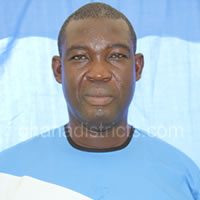Tourist Sites, Beach Resorts and Accommodation
The Shai Osudoku District in totality is a Tourism Destination with Historic Rain Forest, Ancestral Home Caves, Relics, Wild life, Distinctive Festivals, Forts and a Beautiful Gulf of Guinea Sealine.
MAJOR TOURIST SITES
The Dodowa Forest
This is the battle-field of the Kantamanso war which ended in 1826. The defeat of the Great Ashanti Warriors on the 7th of August 1826 marked the end of Ashanti domination of the Gold Coast now Ghana. This Forest has three bowels: The face-washing; the divination; and the bullet collector; bowls on display. These were used in various ways to snatch victory from the Ashantes.
The Great Baobab tree into which the shais with their allies emptied their "spiritually" loaded guns, three (3) weeks after the actual battle, on the 26th August, 1826, welcomes tourists at the outskirts of the Dodowa Township.
The camouflaged trenches which swallowed the Ashanti warriors, the Fetish Shrine in the middle of the forest, the Tsenku Waterfalls to the north of the Forest in the Akwapim Ranges all exist for the Tourists to visit explore and enjoy.
The Oyikum Ancestral Grove – Adumanya
This grove with tall trees, winding "big" ropes and various wild-lives is a taboo forest where no tree either dead or alive should be cut. Recently part has been turned into an apiary (bee -farm) for the production of honey and other related products. Only 4 kilo metres to the north of Dodowa.
The Shai Hills Resources Reserve
This is the place you come face to face with some of Ghana’s most interesting wildlife within less than 40 minutes’ drive from Accra. This Reserve combines Natural conservation. Rich Cultural Interests and Archeological sites - Ancestral Homes (caves) relics artifacts with splendid scenic beauty created by the evergreen forest on the hills surrounded by savanna plains.
You are offered a place of relaxation, entertainment and wonder on the hills at the Ancestral-Home Museum of the Dangme Se (Shai) between 1000 and 1892. Come into the caves - Hioweyo-cave, Bonuteh-cave and Sehyo-cave and catch a glimpse of the insectivorous bats. Or is it the shy and secretive oribis - bush bucks, fast antelopes, the daring baboons or reptiles, or the plethora of beautifully coloured butterflies that you watch without stopping.
The kobs in this reserve have a special significance for the Dangme Shai (Se) - the Dipo fertility initiants sit on the Kob-skin (hide) for purification, cleansing and this induces fertility. Easy to locate - 50km north east of Accra on the Tema - Akosombo trunk road. A surprise awaits you. Be there! You will love it!
The Osuwem Shrine & Osuyom (Ancestral Home)
Osuwem is about an hour’s drive from Accra through Akuse, Asutusare trunk road off Accra Akosombo road. Osuwem house a very wonderful shrine which is fenced yearly in May. The shrine traces its ancestry from south-eastern comer of Egypt. The shrine’s
Festival coincides with the Dzehayem Festival of the Chiefs and people of the Osudoku in the 2nd week of May every year. Here the fetish priest clad in emarculate white cloth around his loins and wearing white beads mostly of cowries shells and besmeared with kaolion ’prays" for the Osudokus and their neighbours for prosperity in the following year.
The Osuyom
This was the Ancestral Home of the Osudokus until after 1892. Just before the climb to the Osuyom is the Asase-Dzuam - "the Swallowing Market. "Then on getting to the Durbar grounds of the people, you face the Hesehe- "Stone-traps. Through the stone traps you get onto a plateau where the people gather.
The sitting places of the Paramount Chief, the Omanklalo, the Asafoatse were distinctively marked with stones by the ancestors. Extortion Shines, Owari-stones (Mikomie) Fufu-pounding and millet pounding stones. A most wonderful Hanging-well served and still serves as the only source of water the people used up on the mountain. Use this water, for it is reputed to give fertility to all who use it.
The Volivo Oyster-Shells Mines
A vast area of pure coral reef of shells for paint production.
Others are:
Nene Wablao Shrine - Osuwem;
The Dzange Shrines - Old Ningo;
Polo Grounds - New Ningo;
Natriku Yachting & Boat racing & other water sports.
ACCOMMODATION
Marina Hotel
This beautiful Hotel just 30 minutes’ drive through the Legon University to Dodowa under the Akwapim Ranges offers you the opportunity to tour the Akonedi Shrines, Shai Hills the Dodowa Forest and Tsenku Waterfalls.
The Mid-Way Rest Stop
At the immediate frontage of the Shai-Hills Resources Reserve offers you rem Ghanaian cosine - Fufu, Banku, Kokonte, Papramsa, Fetridetsi, Ademe and Gboma etc.
Shai Hills Resort
Set in the spacious beautifully built summer-huts, garden with open air relaxation
The Coast-Line
The Shai Osudoku District has one of the most active and picturesque beach lives. Set up in the Gulf of Guinea, Prampram, new Ningo, Old Ningo and Ahwiam are alive to fishing activities throughout the year- paddling of canoes, dragging mending of nests, selling and buying of fish and other commodities.
Real fishing-life
Come and enjoy the Fresh Sea Breeze with its accompanying free sun shine! The Beaches are naturally decorated with beautiful coconut trees, ago-beam trees, raffia palon trees, rocks, sea weeds coral reefs of various shells and white sparkling sand and silver sand. Beach Resorts
The Sealane Hotel and The Golden Beach at Prampram, the Polo Grounds of New Ningo. The "Corn Cee" Resort at New Ningo the Djange Shrines of Old Ningo warmly welcome you. Come and Be at Peace with Nature.
Festivals
The Shai Osudoku District is made up of four (4) Traditional Areas, namely - Shai, Great Ningo, Prampram and Osudoku.
The areas have four distinctive colourful Festivals.
- The Ngmayem Festival of the Dangme Shai-last week of September
- Djangedom/Homowo of the Great Ningo - July and August
- The Kpledom/Homowo Festival of the Prampram - July and August and
- The Dzehayem Festival of the Osudoku-first Friday of May yearly.
All these Festivals are marked with very colourful durbars amidst traditional drumming and dancing, chief parading in palanquins, hoisting of state - umbrellas. The use of various traditional stools, Linguist-stick staffs, state swords, the wearing of ornaments (gold, silver and beads) tattoos, with various meanings and various types of kente and velvets on display. Splendour, pomp and pageantry!
Date Created : 11/24/2017 1:48:37 AM






 facebook
facebook twitter
twitter Youtube
Youtube TOLL FREE 0800 430 430
TOLL FREE 0800 430 430 +233 593 831 280
+233 593 831 280 GPS: GE-231-4383
GPS: GE-231-4383 info@ghanadistricts.com
info@ghanadistricts.com Box GP1044, Accra, Ghana
Box GP1044, Accra, Ghana